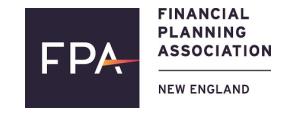It may not say so in the job description or on the business card, but we are all managers. We manage our time. We manage our health. We manage our households, our families and our kids (even if it sometimes seems as if they’re managing us!).
Then there’s our money. Anyone who has cash coming in and bills to pay needs a plan for managing day-to-day finances. Why bother? Because creating and following such a plan is rewarding to your bottom line and your peace of mind. Want to stress less about money? Want more control over your financial present and future? Want a clear idea of how much money you can afford to spend, to save and to share? Then you need a household spending plan. Here are a few keys to managing a day-to-day budget:
Itemize. Start by making a detailed list of income and expenditures. Income is what you earn from your job, plus money coming in from other sources, such as Social Security, stock dividends, etc. On the expenditure side, there are non-discretionary expenses (financial commitments and necessary living expenses, from mortgage, rent and student loan payments to food and transportation costs) and discretionary expenses (things you choose to spend on, such as dining out, vacations, etc.). Your tallies of the money you take in and spend over the course of a month provide the basic parameters for a spending plan.
Find a framework for your plan. Once you’ve itemized, look for an easy-to-use, readily accessible method for the numbers you’ll be tracking. While you could create such a framework yourself with a pen and paper or a basic spreadsheet, a host of eminently affordable and easy-to-use online tools help you establish and maintain a spending plan via computer or smartphone. “Do whatever fits your lifestyle — whatever is easiest for you,” advises Christine Parker, CFP®, of Parker Financial in La Plata, Md. Websites such as Mint.com do most of the heavy lifting for you. Mint.com offers a range of online personal finance tools, along with a downloadable app for the iPhone, Android and iPad. They’re useful and — here’s an important consideration for the budget-minded — they’re FREE!
Choose pillars to support your plan. Decide on a few simple commitments that will help you stick to the plan, and incorporate those into it — things like “use cash instead of credit cards whenever possible” or “pay my entire credit card balance each month.”
Read up. Guidance and info on household budgeting abound on the Web. Start with a visit to the Financial Planning Association’s website. There you can access a downloadable guide, Budgeting: Managing Your Money With a Spending Plan
(www.FPAnet.org/docs/assets/F309608F-1D09-67A1-7A846DEC415D5FE6/budgetingGuide.pdf) that includes a budgeting worksheet.
Be flexible. For example, rather than hold yourself to a specific dollar amount for a certain line item, give yourself a range. For unforeseen events (health crisis, job loss, etc.), have an emergency fund for covering costs that run beyond what your budget can accommodate, so you won’t have to rely on credit cards in a pinch. Revisit and revise the spending plan as circumstances change, such as if you get a raise or have a child.
Keep your eye on the prize. If you find yourself straying from your spending plan, remind yourself why you pursued a household spending plan in the first place. “It’s good to remember what you’re trying to accomplish — what you’re working toward,” explains Parker. Rather than give up on the plan, revise it so it’s easier to stick to.
Reward yourself and members of your household for their hard work sticking to the spending plan. Establish incentives for following the plan — a new book, dinner at a favorite restaurant, an outing to the movies, etc. A modest reward can go a long way.
Get assistance. One meeting with a financial planner can net you a professionally prepared cash flow analysis, plus budgeting ideas you may not have considered. Visit the Financial Planning Association’s national database at www.FPAnet.org/PlannerSearch/PlannerSearch.aspx to find a personal finance expert near you.
BOILERPLATE
December 2012 — This column is provided by the Financial Planning Association® (FPA®) of Massachusetts, the leadership and advocacy organization connecting those who provide, support and benefit from professional financial planning. FPA is the community that fosters the value of financial planning and advances the financial planning profession and its members demonstrate and support a professional commitment to education and a client-centered financial planning process. Please credit FPA of New England if you use this column in whole or in part.
The Financial Planning Association is the owner of trademark, service mark and collective membership mark rights in: FPA, FPA/Logo and FINANCIAL PLANNING ASSOCIATION. The marks may not be used without written permission from the Financial Planning Association.

